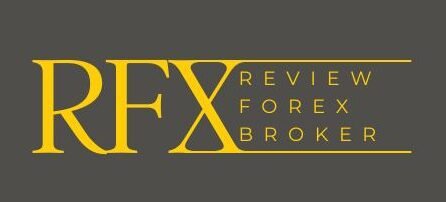Choosing the right Forex broker can make a significant difference in your trading success. While many traders focus on features like platform usability or available trading tools, one of the most critical aspects to consider is the cost of trading. Spreads, fees, and hidden costs can significantly impact your profitability, especially if you’re an active trader.
In this blog, we’ll break down these costs, highlight what to look for when comparing brokers, and provide tips on how to choose a cost-effective broker for your trading style.
1. Understanding Spreads: The First Layer of Costs
The spread is the difference between the bid (buy) and ask (sell) price of a currency pair. It’s how most brokers make their money, especially in commission-free trading models. Spreads can vary widely depending on the broker, the currency pair, and market conditions.
Types of Spreads:
- Fixed Spreads: These remain constant regardless of market conditions. Fixed spreads are suitable for traders who prefer predictable costs and trade during volatile periods.
- Variable Spreads: These fluctuate based on market liquidity and volatility. Variable spreads are often tighter during peak trading hours but can widen significantly during low-liquidity periods or high-impact news events.
How Spreads Affect You:
For example, if a broker offers a 1.5 pip spread on the EUR/USD pair, this means you’ll need the price to move 1.5 pips in your favor just to break even. Over time, high spreads can erode profits, especially for scalpers and day traders who rely on frequent trades.
2. Commissions and Transaction Fees
Some brokers operate on a commission-based model, where they charge a flat fee per trade in addition to the spread. This structure is common among ECN (Electronic Communication Network) brokers, who provide direct market access.
Typical Commission Costs:
- Per Lot: Brokers may charge a fixed fee, such as $5 per standard lot (100,000 units), per side or round turn. For example, trading one lot on EUR/USD could cost you $10 total (open and close positions).
- Percentage-Based Fees: Some brokers charge a percentage of the trade value, which is more common in CFDs or equities trading.
Who Benefits from Commission-Based Models?
Traders using ECN brokers often experience tighter spreads (sometimes as low as 0.1 pips) but must account for commissions. This model is typically better for high-volume traders, scalpers, and those who require precise execution.
3. Swap Fees: The Cost of Holding Positions Overnight
Swap fees, also known as rollover rates, are charged (or credited) when you hold a position overnight. These fees are based on the interest rate differential between the two currencies in a pair.
Factors Influencing Swap Fees:
- Currency Pair Interest Rates: A positive rollover may occur if you hold a high-yield currency against a low-yield currency.
- Broker Markups: Some brokers add a markup to the swap rates, increasing your overnight costs.
Swap-Free Accounts:
For traders who don’t wish to incur these fees, many brokers offer swap-free accounts, commonly marketed as Islamic accounts. However, these accounts may come with other hidden costs, so it’s essential to read the fine print.
4. Hidden Costs to Watch Out For
While spreads and commissions are clear, some brokers impose additional costs that aren’t always obvious. These hidden fees can catch traders off guard and reduce profitability.
Common Hidden Costs:
- Deposit and Withdrawal Fees: Some brokers charge fees for funding your account or withdrawing profits. These can vary based on payment methods or currency conversion.
- Inactivity Fees: If you leave your account dormant for a certain period, brokers may charge inactivity fees, which can range from a few dollars to substantial amounts monthly.
- Platform Fees: While many brokers offer free trading platforms like MT4 or MT5, some charge for access to premium tools or third-party integrations.
- Slippage and Re-quotes: Poor execution practices can lead to slippage or re-quotes, where your trade is filled at a less favorable price, effectively increasing your trading costs.
5. Comparing Brokers: A Step-by-Step Guide
To choose a cost-effective broker, you need to analyze their fee structures carefully. Here’s how:
Step 1: Analyze Spread and Commission Models
- Compare spreads for your preferred currency pairs during peak and off-peak trading hours.
- If using an ECN broker, calculate the total cost (spread + commission) for an average trade.
Step 2: Check Swap Rates
- If you hold positions overnight, compare the swap rates offered by different brokers for your go-to currency pairs.
- Look for brokers that provide transparent swap rate tables.
Step 3: Review Additional Fees
- Investigate any fees for deposits, withdrawals, account inactivity, or platform subscriptions.
- Ensure the broker’s fee policies align with your trading habits.
Step 4: Use a Demo Account
- Many brokers offer demo accounts that simulate live trading conditions. Use these to test spread consistency, execution speed, and any hidden costs before committing real funds.
Step 5: Read Reviews
- Visit trusted platforms like ReviewForexBroker.com for in-depth reviews and user feedback. Look for brokers with transparent pricing and positive trader experiences.
6. Choosing the Right Broker for Your Trading Style
The best broker for you depends on your trading style and priorities:
- Scalpers and Day Traders: Look for brokers with ultra-tight spreads, low commissions, and reliable execution speeds.
- Swing and Position Traders: Prioritize low swap rates and minimal overnight costs.
- Beginners: Opt for brokers with fixed spreads and no hidden fees to keep trading costs predictable.
- High-Frequency Traders: Choose an ECN broker with competitive spreads and commissions to optimize profitability.
Conclusion
Understanding and comparing spreads, fees, and hidden costs is a critical step in selecting the right Forex broker. A seemingly small difference in costs can add up significantly over time, especially for active traders. By evaluating brokers based on transparent pricing, competitive spreads, and minimal hidden fees, you can make an informed choice that supports your trading success.
For detailed reviews of top Forex brokers, visit ReviewForexBroker.com and find the broker that best suits your trading needs.

